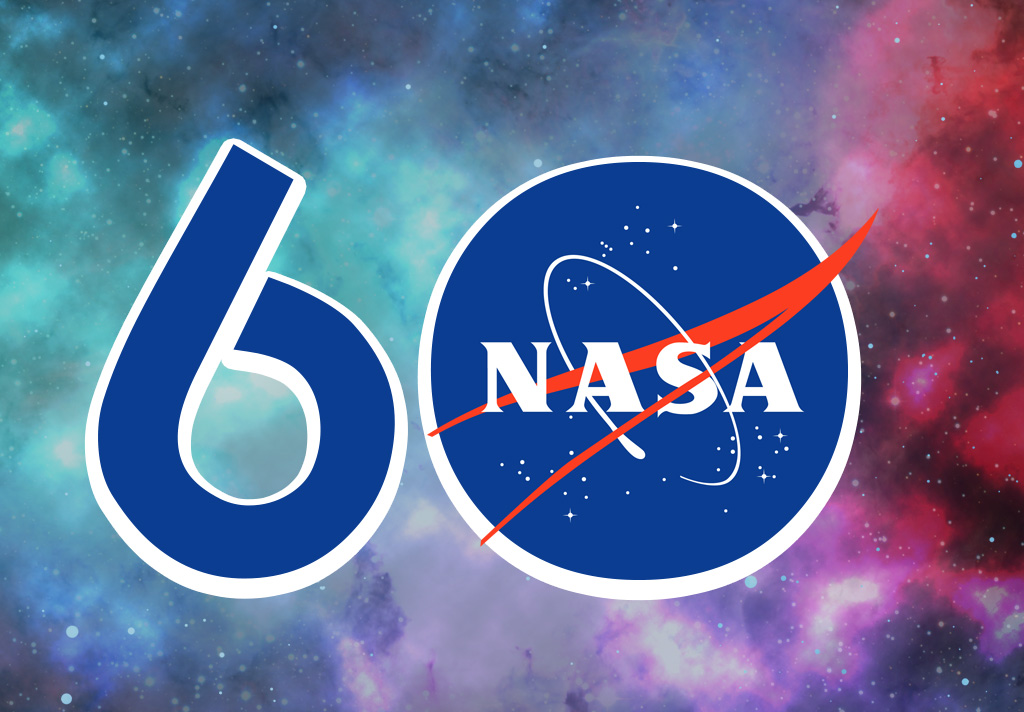NASA celebrates 60 years of space exploration

National Aeronautics and Space Administration (NASA) founded Oct. 1, 1958, is celebrating six decades of universal exploration. NASA’s start was directly related to the pressures of national defense. In 1957, during the Cold War after World War II, Russia launched an artificial satellite named Sputnik starting a “space race” between Russia and the United States.
Johnson Space Center, originally called the Manned Spacecraft Center, was first established in 1961. Houston was picked from a list of 22 cities around the U.S, that met the climate and water criteria. The facility was named after the late President Lyndon B. Johnson, who was responsible for bringing NASA to Houston.
For the past 60 years, NASA has helped change the history of the world. NASA’s space program has reached many milestones including the first man to walk on the moon; Viking 1 sending back the first close-up images of Mars; and Atlas V rocket successfully landing in late 2011, to see if Mars would be inhabitable.
“The space race really started in the Cold War, and it was the U.S. competing with Russia to get space probes to the moon, and then the first people to the moon,” said Matt Gilson, flight controller/instructor for the international space station. “We were actually the first people to the moon, and everything else has really evolved from there.”
In addition to its success, NASA has had its share of setbacks and heartaches. For example, Apollo 1, was supposed to be the first manned mission to land on the moon. The mission never flew because during a launch rehearsal a flash fire broke out in the command module and all of the members of the crew died. Tragically similar was the failed launch of Challenger in 1987, when the spacecraft broke apart 73 seconds after liftoff. In 2003, Columbia disintegrated while reentering the earth’s atmosphere, killing all seven crew members.
Apollo 13 was a close call, but this time the mission had a happy ending. On April 11, 1970, Apollo 13, NASA’s third manned mission to the moon experienced an electrical explosion from one of the emergency oxygen tanks causing malfunctions with the electrical power. Johnson Space Center’s Command Module remained functional using its own batteries and oxygen tank. The iconic line from astronaut Jack Swigert to mission control, “Houston we have a problem,” comes from this historical mission.
Another iconic line comes from the success of Mission Commander Neil Armstrong and pilot Buzz Aldrin’s moon landing in 1969 as part of the Apollo 11 mission. Armstrong, the first man to walk on the moon broadcast the line, “That’s one small step for man, one giant leap for mankind.
“NASA was looking for somewhere between Florida, Kennedy Space Center, and the JPL (jet propulsion space laboratory) in California; this gave them a third location kind of in the middle of the country,” Gilson said.
Since1961, NASA Johnson Space Center has made an economic impact on Houston’s economy and created job opportunities.
The Manned Space Flight Education Foundation reports on its website. “A new economic study reports Space Center Houston has a $73 million annual economic impact on the greater Houston area and plays a significant role in generating jobs and millions of dollars in personal income.”
The University of Houston-Clear Lake (UHCL) was founded in 1971 to accommodate future astronauts and engineers working at Johnson Space Center. UHCL was established to initially create a versatile program with courses in physics, astronomy, chemistry and geology. The university also holds all of the archives for Johnson Space Center.
“A Memorandum of Understanding (MOU) was signed between UHCL, NASA Johnson Space Center, and the National Archives and Records Administration (NARA) in 2001 that gives custody of the JSCHistory Collection to us,” said Erin Henry, archives assistant in the UHCL Neumann Library.
The content of the archives at the university holds a wide variety of space artifacts.
“The records in the JSC History Collection cover more than 40 years of NASA-manned spaceflight,” Henry said. “They include Apollo, Skylab, Apollo-Soyuz Test Project (ASTP), Shuttle, Space Station Freedom, Center Records, General Reference, and the JSC Oral History Project.”
There are many astronaut alumni who have graduated from UHCL, including Bernard Harris, Jr., M.D. and current NASA astronaut, who was also the first African-American to walk in space. He graduated with his M.B.A at UHCL in 1999.
“UHCL established the Research Institute for Computing and Information Systems in 1986 to encourage NASA JSC and local industry to support computing and information sciences research,” said Leigh Ann Shelfer, administrative assistant in the Office of University Advancement.“UHCL and JSC entered into a partnership to define and manage an integrated program of research in advanced data processing technology required by JSC.”
The JSC History Collection was created as part of the UHCL Archives in the Neumann Library in 2001.
NASA’s plans for the near future include landing on Mars in 2020 with a robotic team to study the planet’s environment. NASA is also actively perusing ways to get more people to the moon and beyond where humans have never traveled before. The Orion spacecraft will carry astronauts aboard to study the moon in preparation for more challenging missions.
“So, we are continuing to be at the forefront of man space flight, that includes partnering with private companies that are developing cars that can fly crews to the international space station; like Elon Musk’s Space X is a good example,” Gilson said. “Boeing is also building a crew vehicle, and we continue to partner with them to integrate with them to train the crews.”
The beginning of NASA started as a race against Russia to be the first to launch a human into space and then land on the moon, but throughout the past 60 years, the motive has changed.
“It began as a competition and has turned into a collaboration,” Gilson said.

